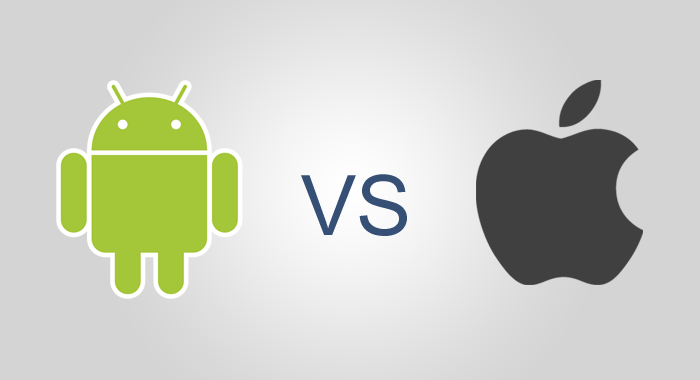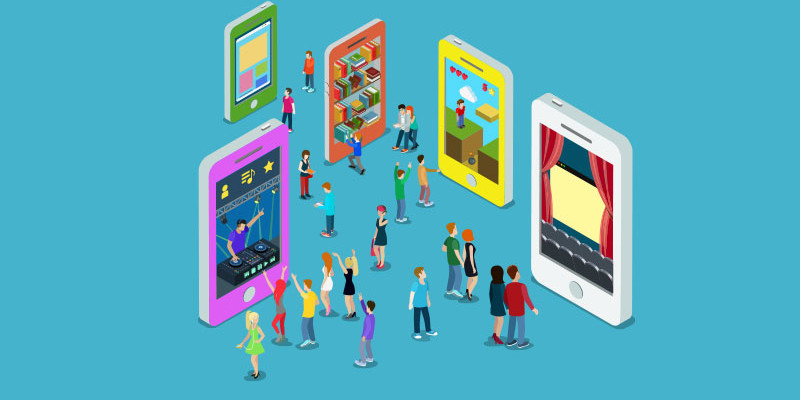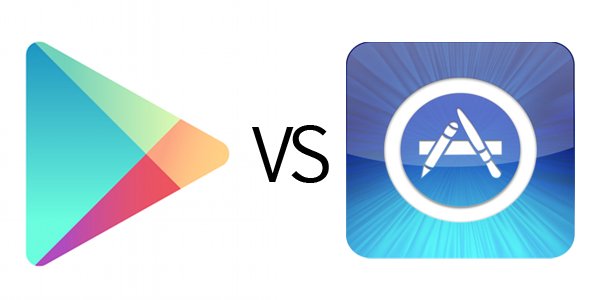
Google and Apple have been dueling each other for a long time now. Since the first smartphone came out and the world was slowly starting to shift into an era of mobile devices that operated through apps, these two companies have never stopped supplying the best services on the market. Mobile apps are the core of smart devices, and app markets are places where users go to obtain such apps. There are several marketplaces at the moment, but it is universally acknowledged that Google’s Play Store and Apple’s App Store are currently (and have pretty much always been) the best ones available.
Each provides content for their respective platforms. The Play Store is the place to be if you own an Android device whereas iOS users will find support on the App Store. There are many debates about which platform is overall better but a definitive answer was never set in stone. We will take this opportunity to explore the ways in which Google’s marketplace beats the Apple App Store, and it is different.
A lot more search-friendly means you find what you need more often
Google and Apple take different approaches when it comes to the way apps are discovered in their stores. Apple is offering a pretty straightforward option. Developers that submit their apps to the App Store have a keyword entry box where they list down all keywords for their app. This means that when someone is searching for one of those keywords, their app pops up in the results. Pretty neat, right? But what if you’re not searching for one of the keywords? If you are going for a more specific search query, the app you might be looking for could very easily slip through the search cracks, so to speak.
Google, on the other hand, offers a much more intricate solution. After all, we’re talking about Google, searching for stuff is their middle name. What Google does differently, is that it takes whatever you are searching for and compares it to every single piece of text on the marketplace. This means that your search will be put up against app titles, app descriptions, and pretty much anything in between. This allows users to get a little more specific with their queries and get accurate and pleasing results.
More accessibility from secondary platforms
Both platforms offer users the possibility of visiting the marketplace from a computer. In terms of information provided, both are about the same, and you’re not going to see much difference between the version that you normally get on your phone and the web page version. However, when it comes to doing more than watching, Apple falls behind.
Don’t Miss: Fix Google Play Store Errors on Android Devices
One of the cool things about Android is that it allows you to install apps directly from the PC web page, onto your mobile device. This can come in handy more often than you would think. Every time you’re browsing on your PC and come across an app that you like, you can just hit the install button and you will be given the option to choose which mobile device you want to install it on.
It will then send the app over to your mobile device over-the-air. Even if you don’t currently have the internet on your phone (which is one of the main reasons why you would be on the web page), the app will start downloading as soon as you connect it. Apple doesn’t offer this type of facilitation and you’re stuck to pretty much-installing apps only when you can access the store on your iPhone or iPad.
Device compatibility and the state of tablets on each side
Smartphones and tablets are the two main forms of smart devices that you are going to see around for the foreseeable future, despite all the futuristic gadgets ramping up in the background. That being said, tablets use the same Android or iOS operating system as smartphones. This would mean, in a pretty simple and obvious manner, that tablets are able to get the same apps from either marketplace that a smartphone could. That’s not entirely true, unfortunately.
Tablets require an app to be able to adapt to their larger screen, and if the app isn’t built to do that, users will be left out of the equation. This is another department where the Google Play Store offers a better solution and seems to handle the situation better overall. Most apps on the Play Store are designed with the ability to run on both smartphones and tablets. If it’s a rare case where that doesn’t apply, the app will scale down to a smartphone screen size. Not optimal, but at least it works.
On iOS devices, an app is either developed to work on a tablet, or it doesn’t. This restrictions iOS tablet users in terms of what apps they can use, and it can get rather frustrating. Having a smartphone means free pass everywhere, but if you are a tablet owner, you will most likely find that the Play Store is a much friendlier place for you.
These are just a few of the ways Google’s Play Store manages to outweigh the App Store, but there are many more examples of that. There are also a lot of ways in which Google’s Play Store falls behind against Apple’s marketplace, as it ultimately boils down to a matter of preference wish just the slightest bit of “pure fact”.
Read Next: Android vs iOS Users: Who is More Loyal?


Join The Discussion: